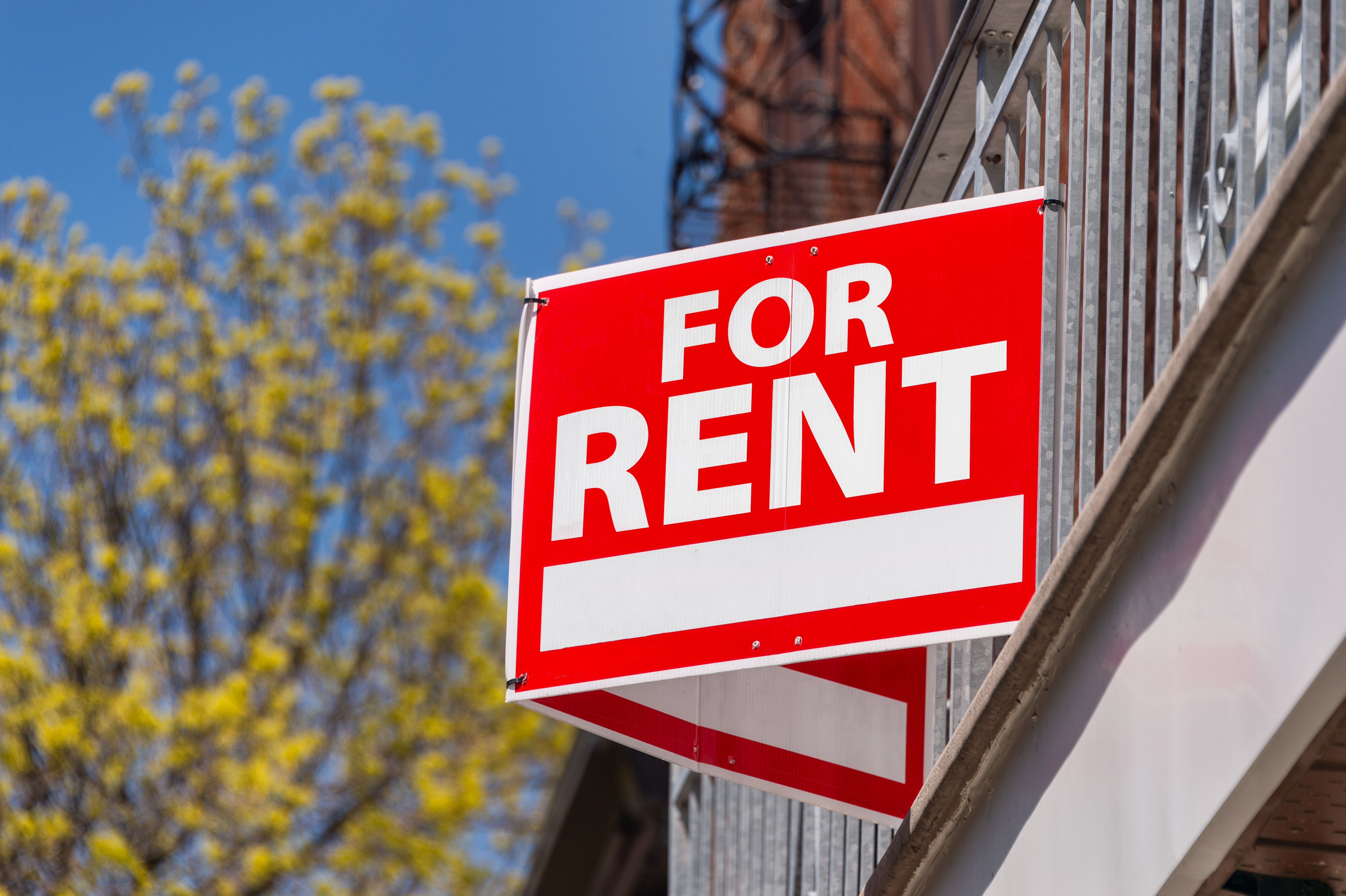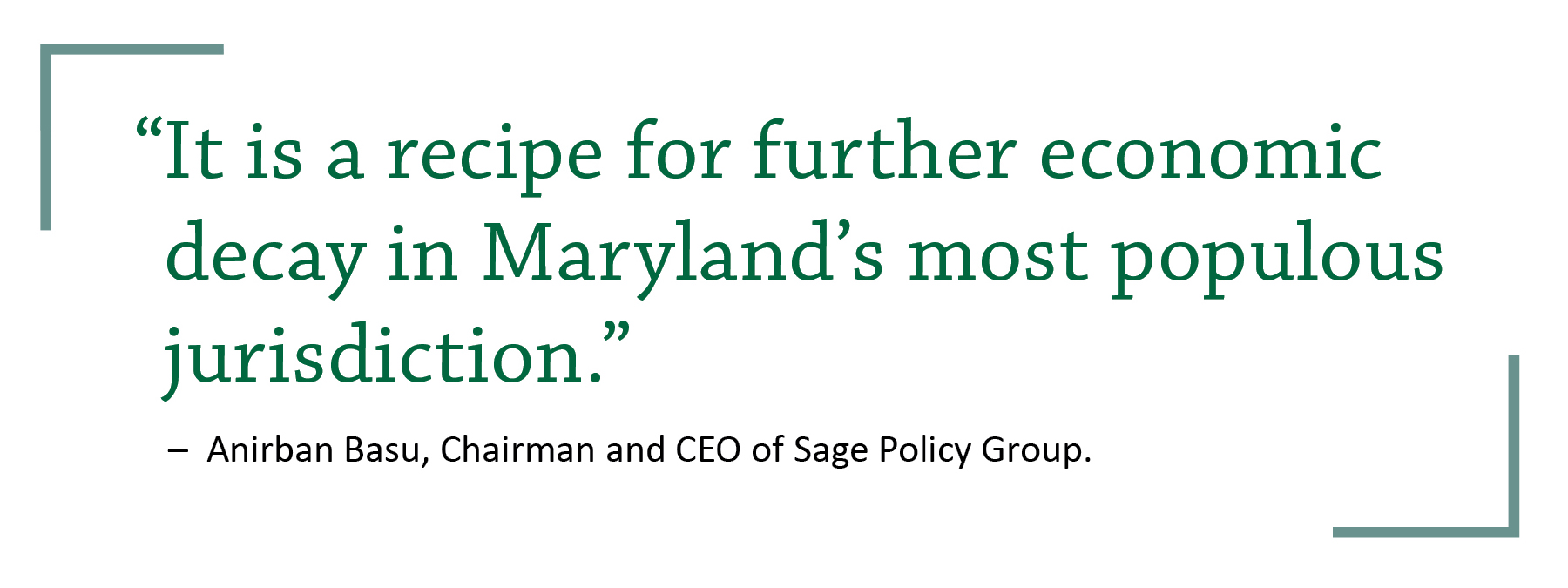An effort by Montgomery County Council to stabilize rental rates is raising concerns that the legislation could actually exacerbate the housing affordability problem and damage the county’s economy.
 After months of hearings, more than a dozen amendments and a voting marathon, council members passed legislation in July that would cap annual increases on rental units. The bill, which will take effect in April 2024, limits rent hikes to 3 percent plus the consumer price index or a flat 6 percent – whichever amount is lower. The bill provides exemptions for units that are less than 23 years old, assisted living and nursing care units, and landlords who own a maximum of two rental units.
After months of hearings, more than a dozen amendments and a voting marathon, council members passed legislation in July that would cap annual increases on rental units. The bill, which will take effect in April 2024, limits rent hikes to 3 percent plus the consumer price index or a flat 6 percent – whichever amount is lower. The bill provides exemptions for units that are less than 23 years old, assisted living and nursing care units, and landlords who own a maximum of two rental units.
The legislation was prompted, in part, by a 9 percent spike in average rental rates in the county in 2021. In a blog post, former Montgomery County Planning Board Chair Casey Anderson described that increase as an outlier, likely caused by landlords attempting to catch up after pandemic measures limited rent increases and evictions. Over the past decade, annual rent increases in Montgomery County have averaged 2.1 percent, Anderson wrote.
“I understand the reasons why the County Council wanted to address this issue because rents have risen, in some cases faster than the rate of inflation,” said Daraius Irani, Ph.D., Chief Economist at the Regional Economic Studies Institute at Towson University. “But I also recognize the consequences of the legislation could be a reduction in the amount and quality of rentable housing in Montgomery County as many multifamily developers and owners limit or avoid investments in the county.”
With interest rates nearing 6 percent, many owners could decide to minimize repairs and upgrades while developers would likely opt to invest in jurisdictions that offer the prospect of higher returns, Irani said.
 “Housing affordability is a genuine, legitimate issue in the county,” said Anirban Basu, Chairman and CEO of Sage Policy Group. “Likely the best way to address it would be to expand the supply of units that are accessible to families with various socio-economic characteristics. There are opportunities to embrace private capital and innovation to help solve this issue. Instead, what policy makers have done is acted as if the supply side of the industry is the problem and penalized them by limiting the upside on their investments… What you will have is a market that remains quite tight, very expensive and one in which there is a dearth of new housing unit formation.”
“Housing affordability is a genuine, legitimate issue in the county,” said Anirban Basu, Chairman and CEO of Sage Policy Group. “Likely the best way to address it would be to expand the supply of units that are accessible to families with various socio-economic characteristics. There are opportunities to embrace private capital and innovation to help solve this issue. Instead, what policy makers have done is acted as if the supply side of the industry is the problem and penalized them by limiting the upside on their investments… What you will have is a market that remains quite tight, very expensive and one in which there is a dearth of new housing unit formation.”
Some analysts point to Takoma Park as an example of the negative impacts of rent control laws. A 2017 report by the Cloudburst Group concluded that Takoma Park lost nearly one-fifth of its rental units between 2000 and 2015 as development of new multifamily properties halted and some existing units were turned into condos. The city’s population of young adults (18-34) dropped by 7.1 percent during that period even as the young adult population for the county grew by 17.4 percent.
“There is a prominent Swedish economist, Assar Lindbeck, who said in many cases rent control appears to be the most efficient technique presently known to destroy a city, except for bombing,” Basu said.
The negative impacts of the legislation could extend beyond exacerbating the problem that the County Council was trying to fix, according to Irani and Basu. A shortage of affordable rental housing will prevent many workers from living in Montgomery County, making it more difficult for employers to maintain staff and potentially convincing employers to move some operations to other jurisdictions.
“This is no way to build a robust, vibrant economy. This is no way to support area small businesses and address the labor force shortage,” Basu said. “Rather, it is a recipe for further economic decay in Maryland’s most populous jurisdiction.”
The rent stabilization law adds to a list of policy decisions and economic conditions that are harming Montgomery County, he said. Those include county tax increases, the loss of some corporate headquarters, decreased demand for office space, shrinking population and the migration of retirees out of the county. In addition, the county’s largest industry is the federal government which is facing a $32-trillion debt, proposed budget cuts and projected insolvency of Medicare and Social Security.
“The county really needs to be attracting private capital, growing the economy and diversifying it,” Basu said. “Instead, policy makers in Montgomery County refuse to do things to attract private capital therefore the economy is becoming even more sluggish and more dependent on federal government outlays… Roughly one in 50 Marylanders lives in Montgomery County. If that county is not performing economically, it is very difficult for the state to pick itself up.”